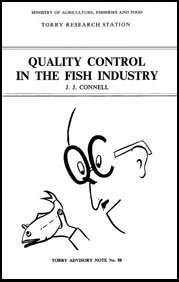
Accompanying Notes
Table of Contents
J. J. CONNELL
MINISTRY OF AGRICULTURE, FISHERIES AND FOOD
TORRY RESEARCH STATION
TORRY ADVISORY NOTE No. 58
Crown copyright material is reproduced with the permission of the Controller of Her Majesty's Stationery Office.
This electronic document has been scanned using optical character recognition (OCR) software and careful manual recorrection. Even if the quality of digitalisation is high, the FAO declines all responsibility for any discrepancies that may exist between the present document and its original printed version.
Provides a basic guide to the principles and practice of quality control. Introduces the complexity of the concept of quality. Defines quality control and its purpose. Explains how and where QC operates, and discusses the preparation of product and process specifications. Considers the main quality factors individually, such as freshness, species, texture, defects, objectionable odours and flavours, bacterial count, salt content, additives, colour and gloss, shape and size, fish content and composition. Advises on inspection, recording and reporting procedures. Briefly refers to the effort required for QC and its cost. In addition to the other Notes referenced in the text, Notes 91, 92, 96 and 97 are relevant.
(FAO in partnership with Support unit for International Fisheries and Aquatic Research, SIFAR, 2001).
Introduction
Definitions
The purpose of QC
Where and how QC operates
Product specification
Process specifications
Operation checks
Inspection of raw
material and product
Recording, reporting and
action
How much QC is required